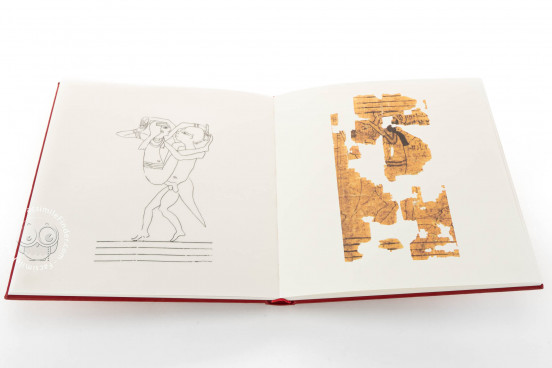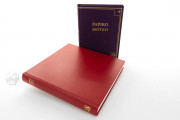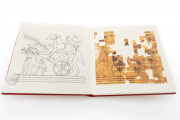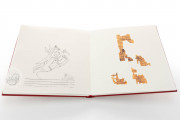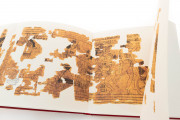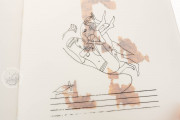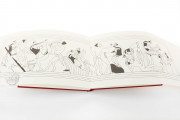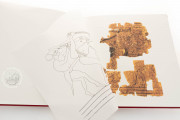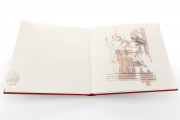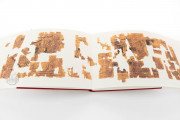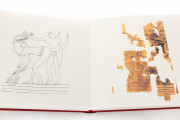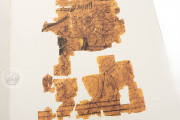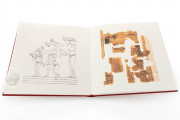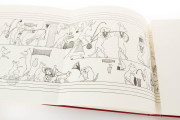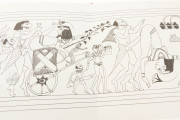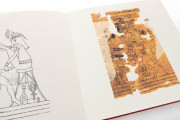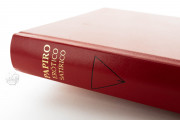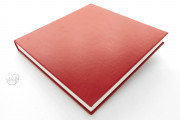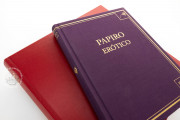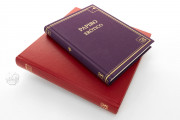The Erotic-satirical papyrus is about 3200 years old (dated between 1186 and 1070 b. C.), and measures 2.59 m. long with the drawn part having an average height of 21 cm. A linear border made of four parallel lines runs along the papyrus, both in the upper edge and at the bottom.
About one third of the drawing consists of figures of animals in human attitudes (in the far right). The rest is occupied by the erotic figures: twelve explicit scenes of sexual positions.
The papyrus was found in the Deir el-Medina, where there was settled a village of builders specialized in the realization of artistic works and artisans in the famous "Valley of the Kings" in Thebes.
The Papyrus arrived to Italy in 1824 thanks to the Drovetti collection. Jean-François Champollion examined it closely when he saw it at the Museum while writing his famous Notebook.
In a letter dated from November 1824 he says: "Here, a fragment of a ritual text, in the back of which human interest had written a sales contract, and there remains of some paintings of monstrous obscenity that offer a very unique idea of gravity and Egyptian wisdom."
The Calco de pinturas egipcias
The Calco de pinturas egipcias belongs to the collection of Luis de Usoz (1805-1865). Usoz lived in Italy in 1824 when the Drovetti collection arrived.
In his magnificent library, donated to the Biblioteca Nacional de España in 1875, there is, stored in a cylindrical metal case, a tracing paper with a copy of the drawings of the Erotic-satirical Papyrus of Turin listed as Calcos de pinturas egipcias.
We have 1 facsimile edition of the manuscript "Erotic Papyrus": Papiro Erótico-Satírico facsimile edition, published by BiblioGemma, 2013
Request Info / Price
